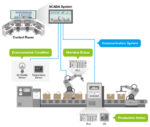HamiltonJet reimagines the waterjet with the LTX36
HamiltonJet has unveiled a new range of high efficiency waterjets, starting with the LTX36 model. Optimised for medium and low speed operation, they’ve produced the first waterjet to rival the energy efficiency and bollard pull of the best propeller-based systems between zero and 30 knots. Waterjets have always been the most efficient choice for going fast. The absence of hull-appendages and their highly optimised pump geometry have allowed HamiltonJet customers to save fuel for over a generation, but as HamiltonJet CEO Ben Reed explains not everyone wants to go fast. “Our customers’ needs are changing, and so is our environment. We understand that operators not only want to reduce their impact on the environment and lower their energy costs, but also maximise efficiency,” says Ben. Some operators achieve this by operating at lower speeds, while others rely on the electrification of the driveline rather than continuing to rely on fossil fuels. Meeting their customer’s needs and expectations is very important HamiltonJet. “LTX36 is a game changer. It delivers incredible energy efficiency at low speeds. Customers can enjoy all the benefits they’ve come to expect from HamiltonJet waterjets – shallow draft, manoeuvrability, and safety of people and marine life in the water – allowing you to do more without compromises,” Ben says. To produce the most efficient propulsion system on the market for low to medium speed applications, HamiltonJet looked to Mother nature for inspiration. “The Moon jellyfish expends far less energy than any other swimming animal, evolving over a millennium to become a marvel of jet-propelled efficiency! Thankfully, we didn’t take a millennium to design the LTX36. The LTX36 uses a large nozzle, lower input energy, lower jet velocity, and lightweight structure to achieve its goals. So, whether you’re looking to optimise your entire enterprise or simply gain incremental benefits […]










